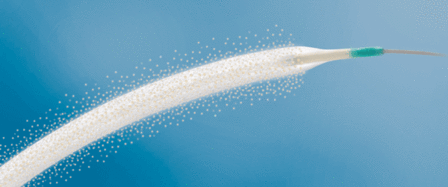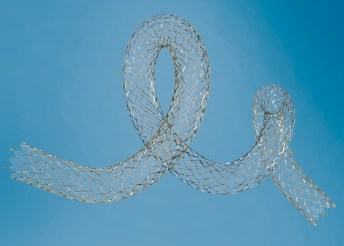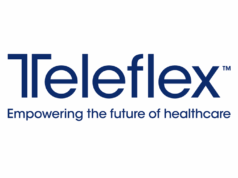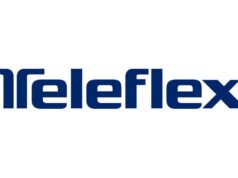
Interim data presented at the 2017 Leipzig Interventional Course (LINC; 24-27 January, Leipzig, Germany) has demonstrated encouraging results for Biotronik dedicated lower limb intervention portfolio.
“Currently available clinical evidence shows that the Passeo-18 Lux drug-coated balloon has similar efficacy to drug-eluting stents when used standalone or in combination with Pulsar self-expanding bare metal stent,” comments Jos van den Berg, Regional Hospital of Lugano, Switzerland, symposium moderator. “One crucial advantage of using drug-coated balloon with Pulsar bare metal stent in the superficial femoral artery, however, is that it may reduce the metallic implant load due to its thin strut design.”
Advantages of combining the Passeo-18 Lux drug-coated balloon with the Pulsar-18 bare metal stent were discussed as part of Biotronik’s Response-adapted combination therapy (REACT) to treat superficial femoral artery disease. “The REACT approach offers physicians versatility when deciding exactly how much metallic support is necessary, based on each vessel’s unique anatomy and lesion characteristics,” adds van den Berg.
The REACT approach is designed to allows physicians to effectively treat superficial femoral artery disease with full-lesion paclitaxel coverage offered by a drug-coated balloon and either spot stent or full-lesion stenting, depending on the lesion response to an initial angioplasty. The latest interim data (203 patients) from the superficial femoral artery disease cohort of the BIOLUX P-III registry, presented by Koen Keirse (Regional Hospital “Heilig Hart”, Leuven, Belgium) investigating Passeo-18 Lux in an all-comers population, demonstrated 12-month primary patency of 82.1% and freedom from clinically-driven target lesion revascularisation of 94%.

The bailout stenting rate within BIOLUX P-III was 14.5%. Further data and subgroup analysis, including TASC D and heavily calcified lesions, are ongoing. In addition to the data from BIOLUX P-III, the BIOFLEX PEACE all-comers registry, presented by Michael KW Lichtenberg (Clinic Arnsberg, Germany) shows that the Pulsar-18 self-expanding bare metal stent alone—and also in combination with drug-coated balloon therapy—continues to be an effective treatment option in the superficial femoral artery. The primary patency rate of 74.3% and freedom from target lesion revascularisation of 92.6% confirm the results shown in previous Pulsar studies.
Interim data (90 of 120 patients) on the intentional combination approach using Passeo-18 plus Pulsar-18, from the multicentre investigator-initiated BIOLUX 4EVER study, presented by Koen Deloose (AZ Sint-Blasius Hospital, Dendermonde, Belgium), demonstrated primary patency at 12 months of 88.9%, and a freedom from target lesion revascularisation of 92.5%. Previously, the prospective, investigator-initiated DEBAS4 study showed a similar (94.1%) rate of primary patency at 12 months.













